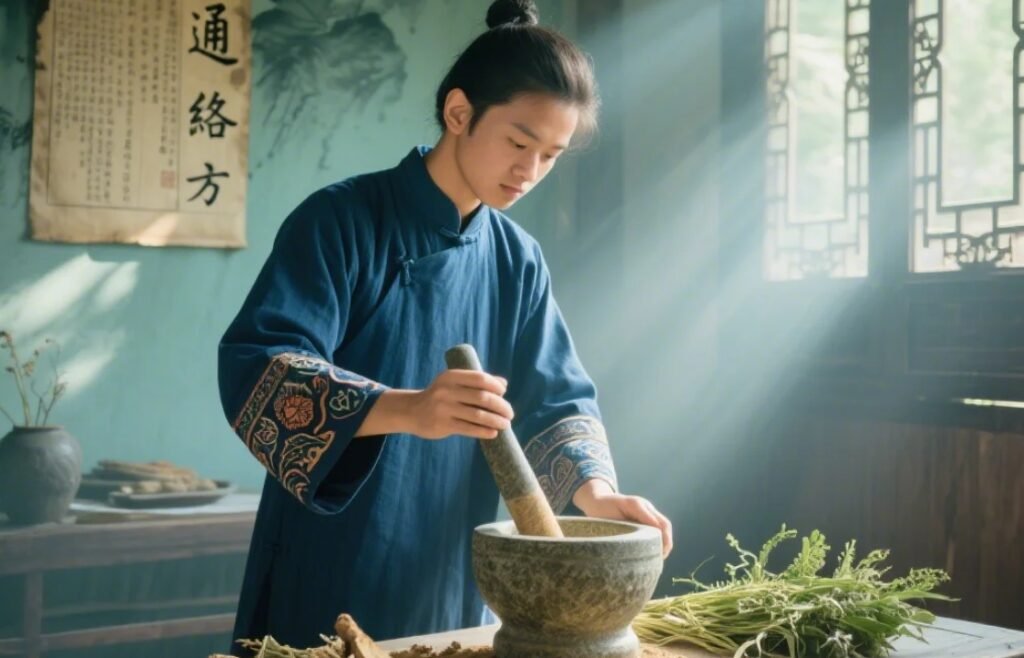Zaga (Diarrhea)
Overview
In Miao medicine, diarrhea is called Zaga. It arises from irregular diet or invasion of “water toxin” or “heat toxin” that injures the spleen–stomach qi, leading to a disturbance of qi–fluid balance. Clinically it manifests as frequent, watery stools.
In Traditional Chinese Medicine, diarrhea (with loose stools) and acute watery diarrhea both fall under “diarrhea.” In Western medicine, any gastrointestinal disorder—such as acute enteritis, inflammatory bowel disease, irritable bowel syndrome, malabsorption syndromes, intestinal tumors, or tuberculosis—or other organ diseases that result in diarrhea can be managed by the principles below.
Miao Medicine Subtypes
Zaga is a minor syndrome divided into two patterns:
Hot–channel diarrhea
Cold–channel diarrhea

Etiology
External invasion of damp–heat or water toxin
Dietary indiscretion or overeating
Emotional stress
Congenital deficiency or chronic weakness of the spleen–stomach
Pathogenesis
Pathogens or unclean food injure the spleen’s qi, disrupting the transformation and transportation of fluids. Damp–heat stagnates in the intestines, causing urgent watery stools; cold–damp injures yang, leading to chronic loose stools.
Key Diagnostic Points
Primary Signs
Watery or very loose stools, frequency increased (3–10+ times per day)
Undigested food in stool
Associated Symptoms
Abdominal distension, rumbling, reduced appetite
Possible abdominal pain, tenesmus
Onset
Acute (often after overeating or ingesting unclean food)
Chronic or recurrent
Laboratory & Endoscopy
Stool studies (WBC, pathogens)
Colonoscopy or small-bowel endoscopy for chronic cases
Abdominal ultrasound or CT if needed
Differential Diagnosis: Dysentery
| Feature | Diarrhea (Zaga) | Dysentery |
|---|---|---|
| Stool | Watery or loose, no blood | Frequent stools with blood or pus |
| Abdominal pain | Mild or none, relieved by stool | Severe with tenesmus |
| Urgency | May be urgent | Marked urgency (“rushing to stool”) |
Treatment by Pattern
1. Hot-Channel Diarrhea
Signs: Urgent, clear watery stools; abdominal rumbling; burning at the anus; thirst with preference for cold drinks; scant yellow urine.
Principle: Clear heat, drain dampness, astringe.
Formula (decoction):
Purslane (Portulaca oleracea, machixian) 15g
Kudzu root (Pueraria lobata, gegen) 50g
Indian mock strawberry (Duchesnea indica, weilingcai) 10g
White peony root (Paeonia lactiflora, baishao) 12g
2. Cold-Channel Diarrhea
Signs: Recurrent loose stools aggravated by cold; pale complexion; cold sensation in abdomen; desire for warmth; reduced appetite; fatigue.
Principle: Tonify spleen–stomach, warm the middle, stop diarrhea.
Formula (decoction):
Siler root (Saposhnikovia divaricata, fangfeng) 20g
Melia fruit (Melia toosendan, kulianzi) 20g
White peony root (Paeonia lactiflora, baishao) 15g
Hawthorn fruit (Crataegus pinnatifida, shanzha) 15g
Barley sprouts (Hordeum vulgare, maiya) 15g
Prevention & Nursing
Maintain regular routine; protect against cold, damp, and heat.
Eat a light, nutritious, easily digestible diet; avoid raw, greasy, or spicy foods.
Manage stress; keep emotions balanced.
Commentary
Miao medicine sees the interplay of qi, blood, and fluids as central to diarrhea. Treatment focuses on either clearing heat and draining dampness or warming and tonifying the spleen–stomach, depending on the pattern, while astringing to stop diarrhea.


Leave a Reply